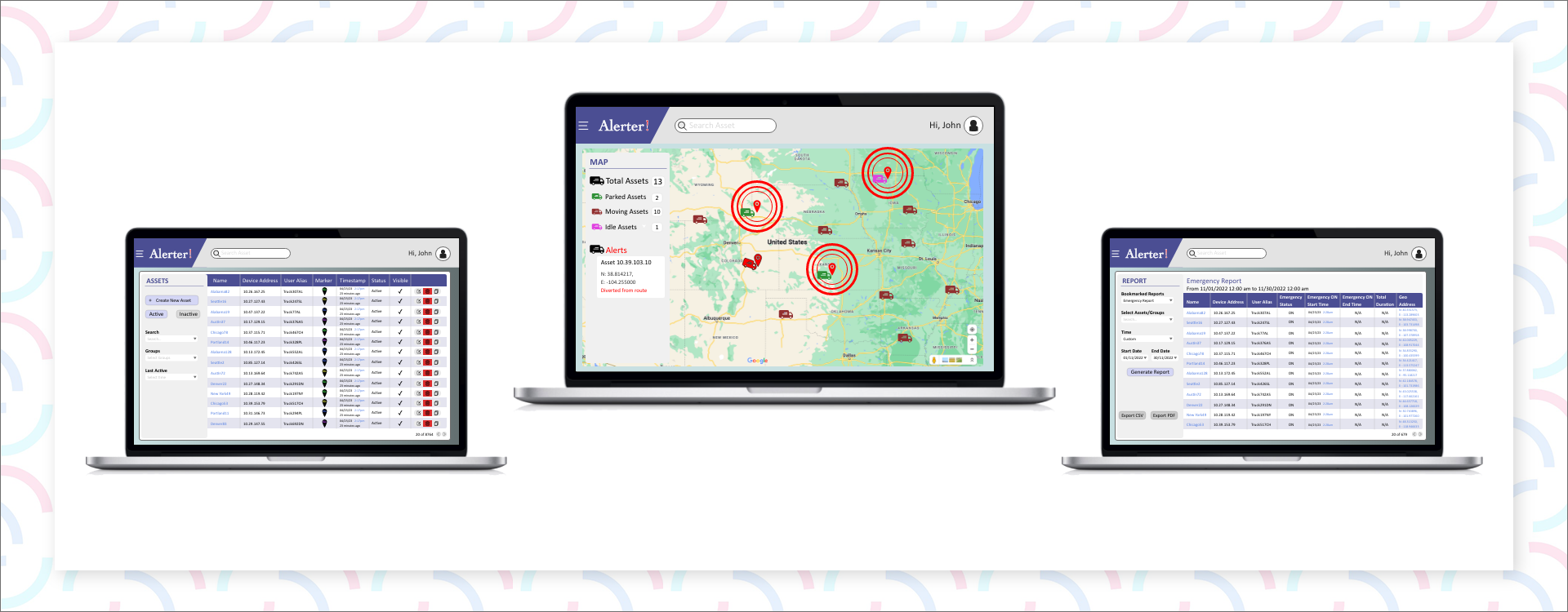Overview
The solution monitors real-time data of the assets, focused on tracking the asset to visualize the information and generate custom reports for that asset.
At A Glance

Industry
Logistic

Region
USA

Duration
2 Years
Technical Stack







Client Profile
The client is a USA-based SaaS company providing live tracking and historical data of any asset, along with custom asset tracking solutions. They are into integrating cutting-edge technology to enhance functionality and performance.
Challenge
- The client was facing an issue with the manual tracking of its assets in remote locations where normal means of communication were difficult. This was leading to higher chances of human error while recording the accurate location and time of the assets.
- The client wanted a streamlined system that would provide various types of alerts like Emergency, Geofence, etc. about the assets, based on activities, in a chronological manner, with each activity monitored separately.
- The client wanted to monitor real-time data processed within microseconds and handle large amounts of data.
- The client was facing a challenge in creating and maintaining a centralized database due to data transfer within an existing database and the organization's legacy system, resulting in reduced efficiency.
- The system users had to remember multiple usernames and passwords to authenticate across various platforms, which resulted in user inconvenience and decreased productivity.

Solution
- Seaflux created the geofence around selected regions and implemented location tracking to check if the asset is within the geofence and track its whereabouts with accuracy. Any asset moving in the wrong route would trigger an alert for the user using radio frequency as a communication medium. This helped to generate events for the user, providing real-time updates about their location and taking necessary decisions in case of any alert.
- Using custom Redis logic, the active trigger information is added to the queue to build an event. Each event gets placed in chronological order and creates an extensive database that would help to analyze the data in real-time.
- The solution can also be integrated with third-party applications that provide data about the assets. These assets' data can also be uploaded via an Excel sheet to initiate the analysis.
- Seaflux used Elasticsearch, a powerful engine for real-time data analysis and monitoring, to provide accurate and reliable insights to the client using the data accumulated.
- Seaflux migrated several monolithic applications to a custom microservice application resulting in improved scalability that is easy to maintain and utilize by other systems for analysis.
- Seaflux implemented a Single Sign-On (SSO) authentication system using Auth0 services. This allowed users to authenticate across multiple platforms using a single set of credentials, significantly reducing user inconvenience and enhancing security by promoting the use of strong passwords.
- Based on historical data accumulated, Seaflux designed an ML model for doing predictive analytics to optimize asset utilization in these remote places without wifi connectivity. This predictive maintenance model would help reduce the downtime of the assets.
Key Benefits
- The improved solution helped the client with ease of use and could do better planning with the help of predictive analytics. This reduced the time spent by the staff on managing the assets manually by 37%.
- The client was able to perform accurate and real-time reporting of the assets with better real-time data visualization. This helped them better plan and implement their asset utilization, which increased their efficiency by 19%.
- The improved system provides on-demand information for decision-making, identifying and responding to issues that may arise. This reduced their response time from several hours to a few minutes.
Develop your next idea with usGet in touch






